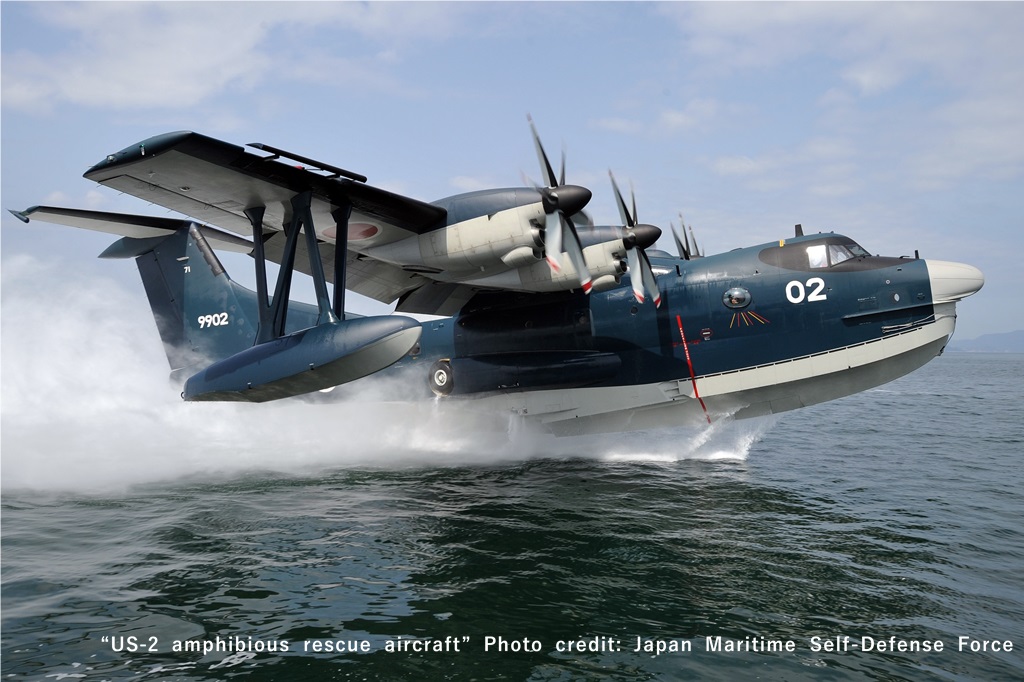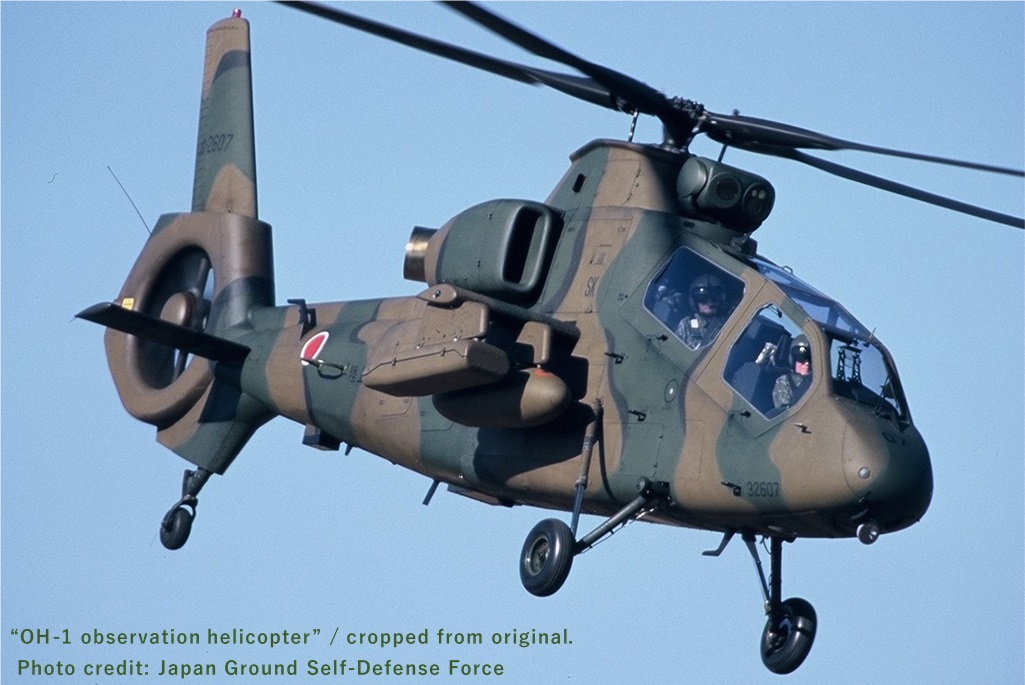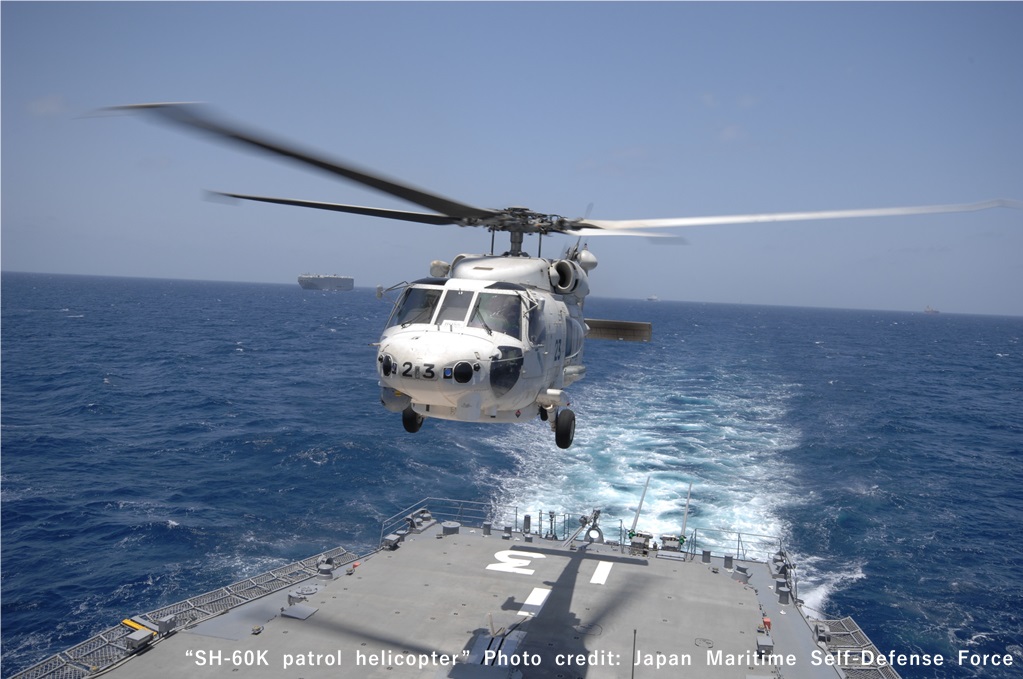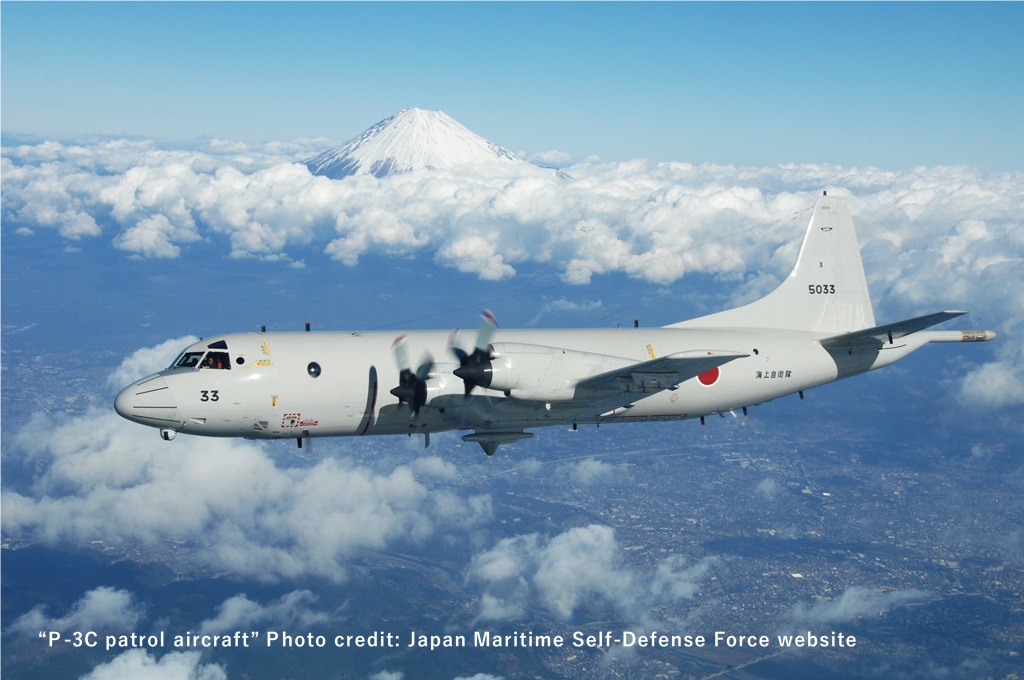Flight Control Equipment
How to fly an airplane
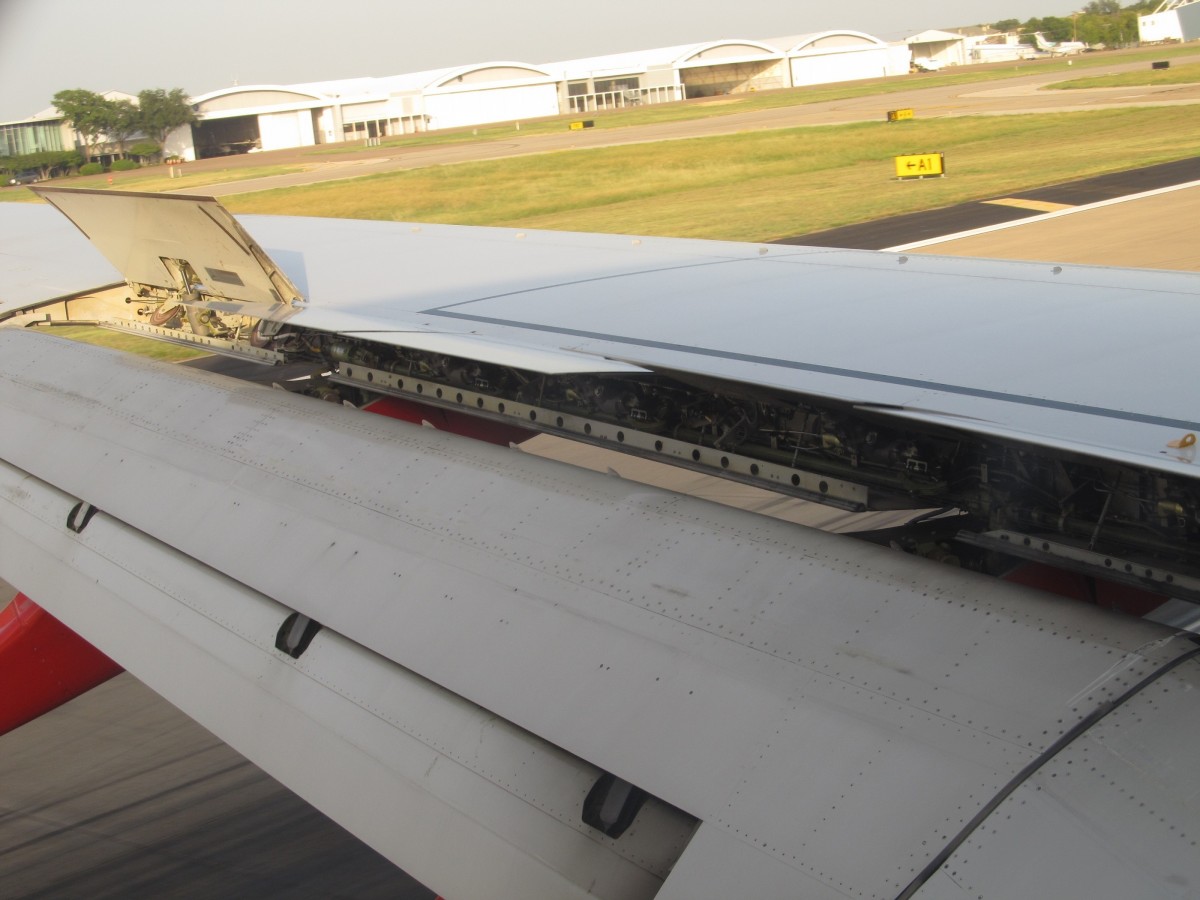
From the window seat of an airplane, you may see parts of the wing standing up or extending to the rear as shown in the photo on the left. Such plate-like movable parts of the wings and tail are called flight control surfaces. They are devided into main control surfaces, that are ailerons, elevators and rudders to control the aircraft's attitude around the three axes (roll, pitch & yaw) respectively, and secondary control surfaces such as slats, flaps and spoilers, whose main purposes are to either augment or reduce the lift. When you sit on a window seat of an airplane, you may see parts of the wing standing up or extending to the rear as shown in the photo above. Such plate-like movable parts of the wings and tail are called flight control surfaces. They are devided into main control surfaces, that are ailerons, elevators and rudders to control the aircraft's attitude around the three axes (roll, pitch & yaw) respectively, and secondary control surfaces such as slats, flaps and spoilers, whose main purposes are to either augment or reduce the lift.
Flying an airplane is about adjusting the control surfaces and engine thrust.
Flight control equipment is a set of devices that actuates flight control surfaces. We, Tokyo Aircraft Instrument (TKK), manufacture flight control computers (FCCs) and actuator control computers (ACCs.)
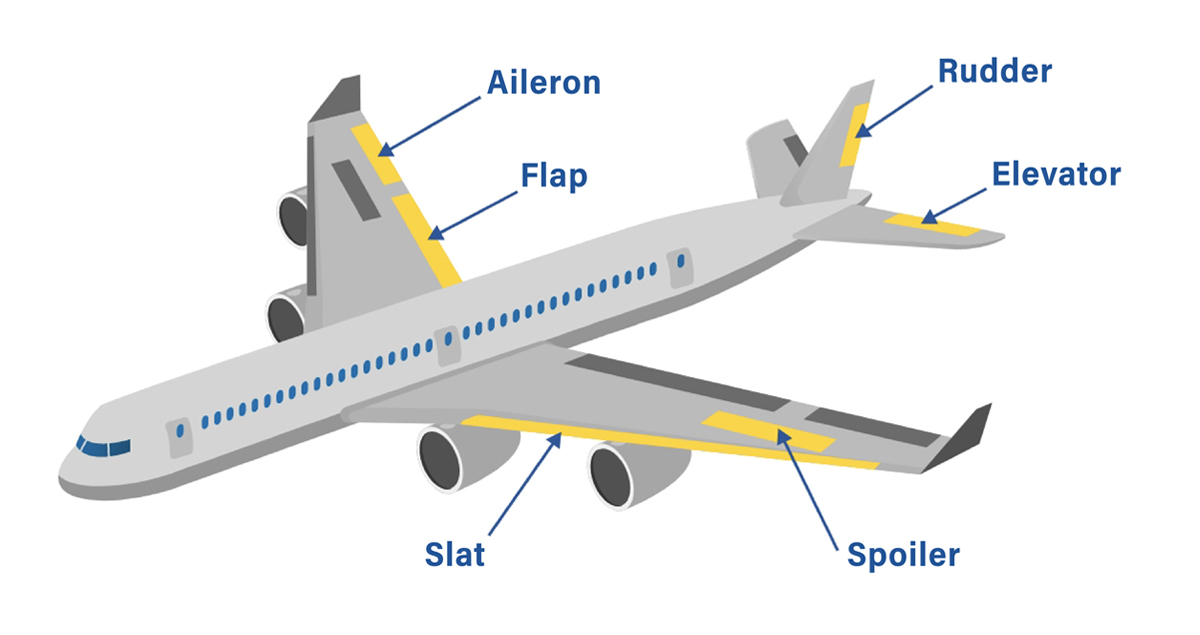

Top: Airplane control surfaces shown in yellow
Bottom: Airplane rotation caused by each main control surface (from the left, airleron, rudder, elevator )
FCC and ACC
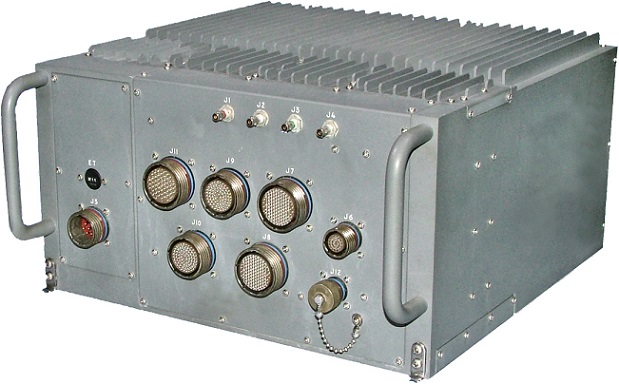

The FCC's outputs are transmitted to the ACC. Following commands from the FCC, it precisely controls the actuator that drives the control surface. The ACC also provides the actuator with power needed for actuation.
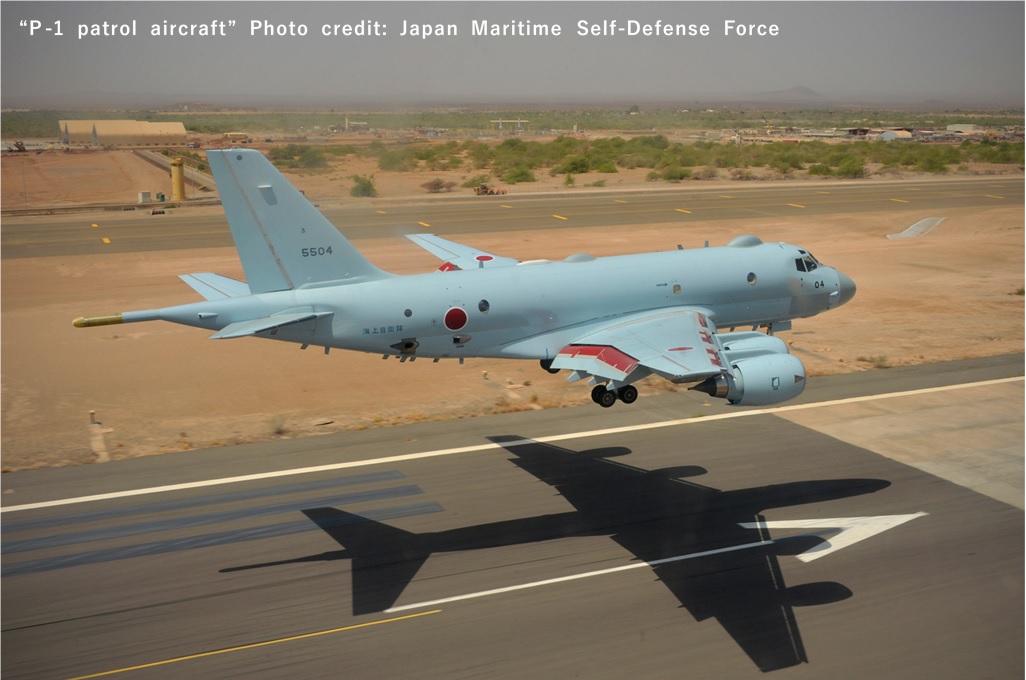
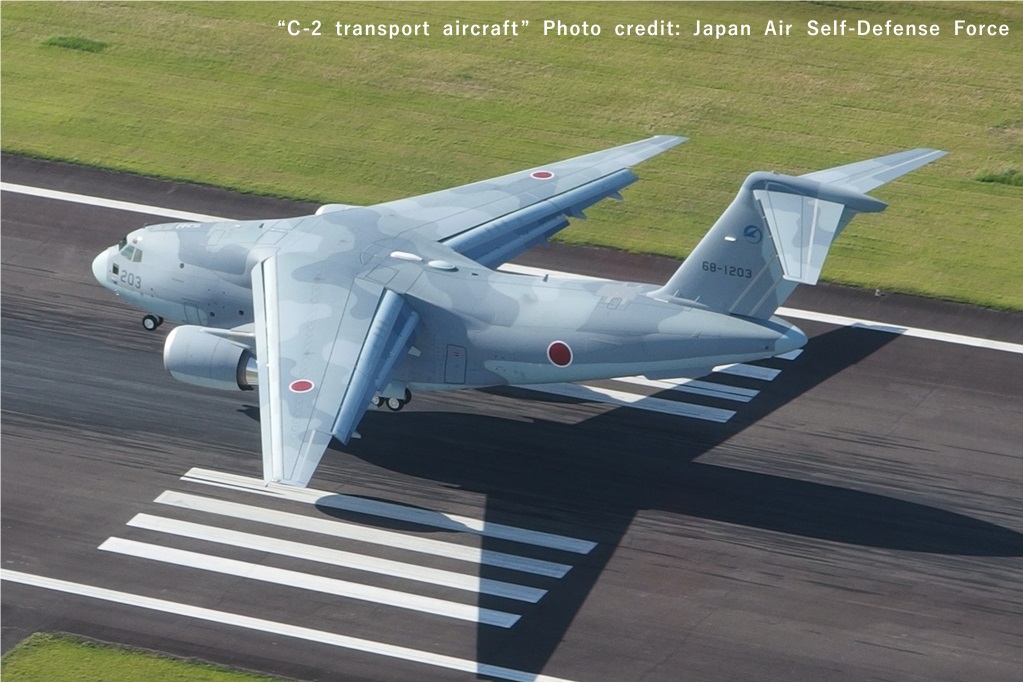
Our FCCs and ACCs are installed with high-performance CPUs and incorporate various technologies to ensure high reliability. Especially, their built-in test (BIT) functions are refined to near 100% failure detection rate.
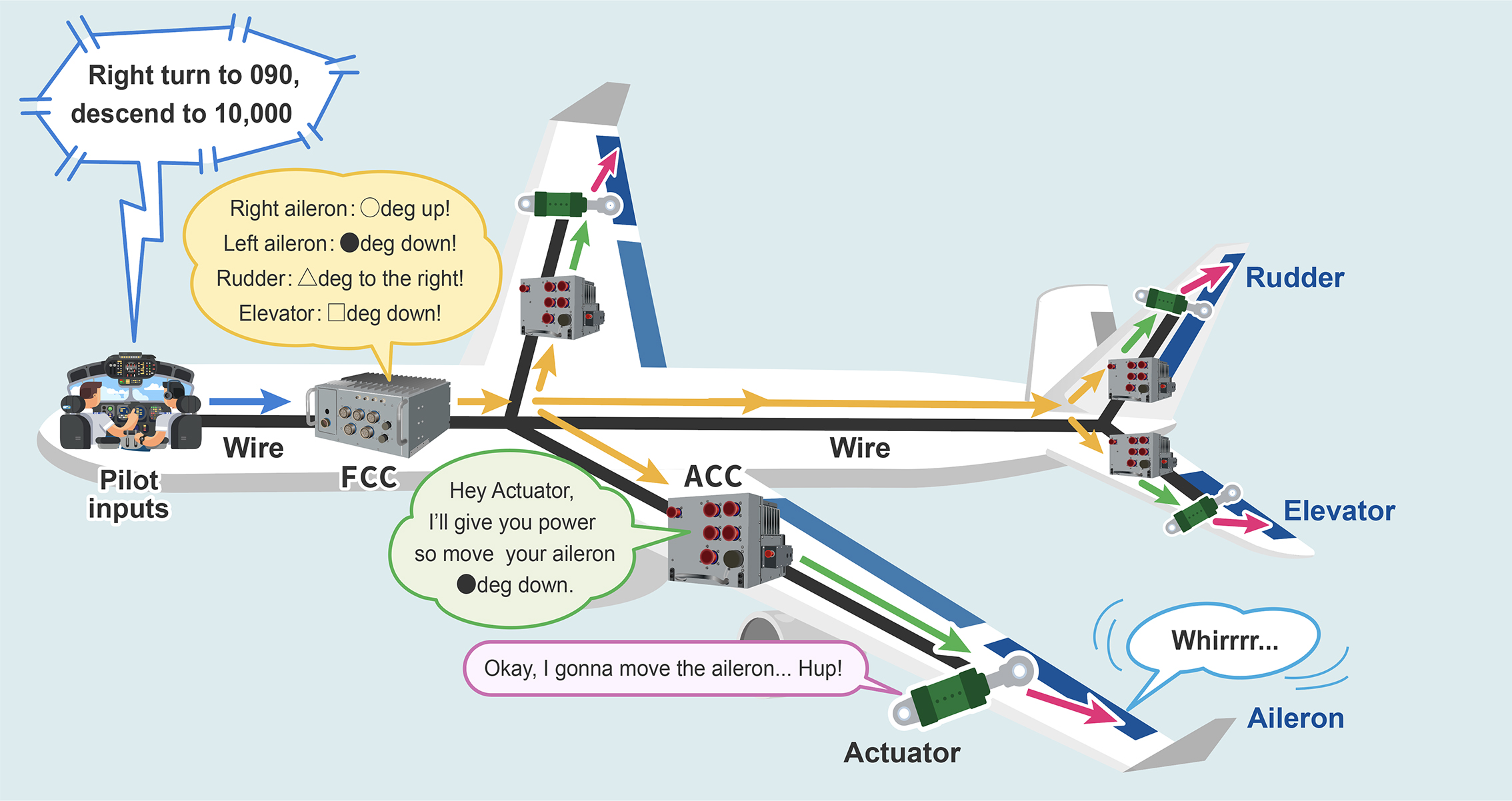
How pilot's inputs actuate a control surface on a fly-by-wire airplane
Looking ahead to electric aircraft
Actuating control surfaces on a large aircraft requires a great force. So currently most of actuators are hydraulic, i.e. producing driving force by putting hydraulic oil into and out of cylinders thus operating pistons, but state-of-the-art widebodies like Boeing 787 and Airbus A380 have introduced partially electric actuators.
In anticipation of a more electric future of aviation, we are conducting a study of motor controllers that literally control motors to actuate control surfaces with electric power. TKK joined the "practical application project for aircraft advance systems" led by New Energy and Industrial Technology Development Organization (NEDO) in FY 2015 through 2019, and conducted commissioned research and development of a next-generation flight control and maneuvering system that incorporates the motor controller.

